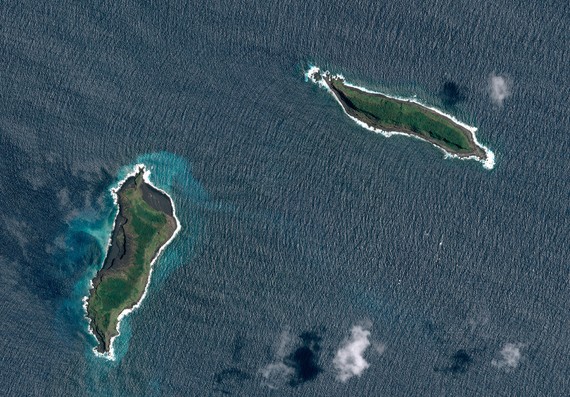Late last year, in the sparkling blue of the South Pacific, a huge volcanic eruption produced the newest island on Earth. The island, formed by the undersea Hunga Tonga-Hunga Ha'apai volcano, is "basically small pieces of rock on top of each other," as one scientist put it to the BBC.
"The surface was hot," Gianpiero Orbassano, a hotelier in nearby Tonga, told the outlet after he traveled from 39 miles away. (He also captured stunning images of the new land.) The island is approximately one mile long and according to Orbassano, dotted with sulphuric lakes. Last month, the land mass was only half-a-mile long, according to The Telegraph. Local scientists discourage adventures like Orbassano's, saying the new island is unstable.
Hunga Tonga-Hunga Ha'apai is part of the Ring of Fire, an area in the Pacific known for its earthquakes and volcanic eruptions. Such seismic activity can not only create new land, it can also destroy it. The most famous example is the 1883 eruption at Krakatoa, in Indonesia. The eruption was cataclysmic: The volcano destroyed most of the island on which it was situated. The sound it made is considered the loudest known in human history.
These days, the most active volcano in the Pacific is Kīlauea, on Hawaii's Big Island, which has been erupting continuously since January 1983—that's 32 years of continuous lava-drip into the sea. Which means that Hunga Tonga-Hunga Ha'apai may have created the newest island, but Hawaii is still getting bigger every day.

This article was originally published at http://www.theatlantic.com/technology/archive/2015/03/Volcanic-Eruption-South-Pacific-Yields-New-Island-Tonga/387625/
